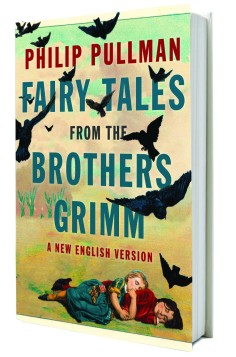
Grimm tales told the old-fashioned way
Yet, I may not appreciate the antiquated oral stories shared in the 1800s among peasants sitting by the hearth in their family cottage. That's why I want to read Pullman's version. I love his writing, and I know that he will "tell it like it is", free of personal interpretations or modern influences.

Pullman's source was , written by Jacob and Wilhelm Grimm two centuries ago.
Through their study of philology and comparative linguistics - they worked on the first German dictionary - the Grimm brothers became preoccupied with German folklore. They collected fairy tales from oral and literary sources, and were careful to treat their material authentically.
Authenticity is a tricky proposition. I don't enjoy the Disney versions of fairy tales because they are mere caricatures of the originals.
Yet, I may not appreciate the antiquated oral stories shared in the 1800s among peasants sitting by the hearth in their family cottage. That's why I want to read Pullman's version. I love his writing, and I know that he will "tell it like it is", free of personal interpretations or modern influences.
Adults are constantly shielding children from anything deemed inappropriate or too damaging to their psyches. By contrast, it seems that worrying about causing psychological distress on children ranked low in agrarian families of the past, when there were famines, wars and epidemics to contend with.
Pullman's straightforward and authentic retelling reveals how scare tactics were employed in the original stories to teach moral lessons. Children in the Grimm tales get eaten by wild animals, abandoned by impoverished parents, and trapped by cannibalistic witches.
Parents can judge at what age to share the original Grimm tales with their children. Meanwhile, the versions reinterpreted for toddlers in Mary Englebreit's are a wonderful introduction to these stories.
We also have Englebreit's , much loved in our home for the stories, as well as Englebreit's vintage-style illustrations.
Many of the stories from are gentle versions of Hans Christian Andersen's originals.
Unlike the Grimm brothers, who collected folklore, Andersen created all the characters and plots for more than 150 fairy tales. For a faithful English translation, older children will enjoy by Jeffrey Crone Frank and Diana Crone Frank.
These are timeless tales which are intended for children and adults alike.

